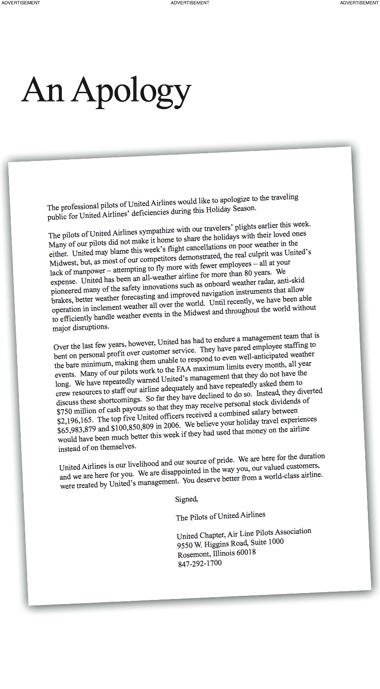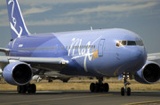
Someone wrote me yesterday and accused me of being grouchy in my last post.
I wasn’t being grouchy. Was I?
Well okay, here’s some “uplifting” travel-related comments from my recent foray to Dallas.
The new boarding procedure at Southwest? It works. I have no complaints. Although it seemed to work better at Love Field — maybe because the gate agent reminded folks that there was no longer any need to stand in line in advance. In New Orleans, the entire gate area decided to try and figure out where they were supposed to stand, way before the folks had even deplaned from the aircraft that had just landed. Made for more of a “cattle call” experience than in the past.
But nah, I thought the new boarding system at Love Field worked quite well.
Mesa Air Group Set to Release Fourth Quarter Results Dec. 28
Other miscellaneous notes of interest before we sign off to go work on Christmas-related ventures — as we reported last week in PlaneBusiness Banter, Mesa Air Group had not filed its 10-k for fiscal year ending Sept. 30, nor had they asked for an extension. By our calculations, last Friday was the deadline.
Friday, the airline did ask for an extension. Then yesterday the airline announced that it will release its fourth quarter results and hold an earnings call to discuss those results next Friday, Dec. 28.
Nothing like releasing earnings during a dead period of the year. Much less on the Friday before New Years.
Interested listeners will be able to access the call at http://www.mesa-air.com. A replay of the call will be available at 1-800-282-7027,
11:00 a.m. ET.
Flight Caps, Auctions, and More Military Airspace Access
Meanwhile, the DOT announced today what we had all anticipated — it says it is now working with airlines to come up with a plan for “voluntary” flight caps at both Newark and JFK International Airports. The DOT also said today that it also expects to auction off new slots at Newark and JFK (this could get interesting) and that the U.S. military has given its okay to allow commercial air traffic in selected military air space up and down the East and West coasts, in an attempt to ease flight delays.
Show Us Your Tails
The WSJ reports today that the rudders of about 420 older Airbus aircraft are being subjected to
repetitive ultrasonic and other enhanced inspections, “the first time airlines and safety regulators have resorted to such recurring, high-tech procedures to determine the integrity of composite parts on airliners already in service.”
The story continues,
“The stepped-up inspection program, recommended by Airbus months ago and then reaffirmed by the European Aviation Safety Agency through a mandatory directive, calls for the first enhanced rudder checks to be completed within six months or 500 flights. Some inspections on certain planes must be
repeated every 1,400 flights, a relatively short compliance schedule for checking structural integrity of primary flight structures.
The enhanced inspections, including ultrasound, X-rays and other techniques, stem from a March 2005 incident in which an Air Transat Airbus A310 suddenly lost its rudder over the Caribbean while flying from Cuba to Quebec. There were no injuries, and the plane returned safely to Cuba. But as a result,
the plane’s manufacturer, Canadian air-safety investigators and European regulators began investigating what, if any, additional inspection requirements were necessary to safeguard the integrity of such rudders used on early model Airbus aircraft.
While the changes primarily affect a relatively small number of older twin-engine A300s and A310s, they nevertheless represent a significant break from longstanding Airbus-developed maintenance standards for composite materials. Before the incident, Airbus, a unit of European Aeronautic Defence & Space Co., and European regulators maintained that simple visual inspections, combined with a mechanic’s manually tapping on the surface of the composite rudders, were adequate to detect any potentially hazardous internal flaws or structural weaknesses.
But now for the first time, high-tech inspections methods are being required — and must be repeated during the life of a what Airbus described as a “limited number” of Airbus jets — to assure long-term rudder integrity. A spokesman for Airbus U.S. operations said only a small number of affected aircraft are flown by U.S. carriers. Spokesman Clay McConnell said about 400 A300 and A310 aircraft are covered by the added inspections, along with 20 wide-body Airbus A330 and A340 jetliners. Mr. McConnell said Airbus changed its rudder-manufacturing process before the 2005 incident.”
Tickers: (Nasdaq:Mesa); (NYSE:LUV)








